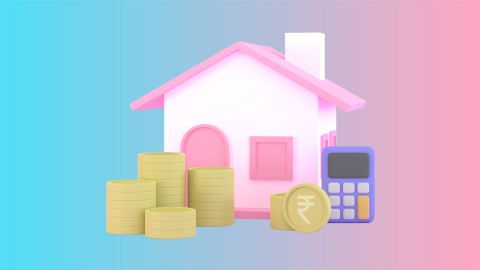Filing an Income Tax Return (ITR) can be a daunting task, especially without the convenience of Form 16. Form 16 is typically issued by employers to their employees and serves as a comprehensive summary of the salary paid and the tax deducted at source (TDS). However, there may be situations where you don't receive Form 16, such as if you switched jobs, if your employer failed to issue it, or if you're self-employed. Regardless of the reason, it is still possible to file your ITR accurately. This comprehensive guide will walk you through the steps to file your ITR without Form 16.
Understanding Form 16 and its importance
Before delving into the process of filing ITR without Form 16, it's essential to understand what Form 16 is and its components. Form 16 is divided into two parts:
- Part A: This section includes details such as the employer’s and employee’s information (name, address, PAN, and TAN), the summary of tax deducted and deposited quarterly, and the employee’s PAN.
- Part B: This annexure provides details of the employee’s salary break-up, deductions under Chapter VI-A, and any other income disclosed by the employee.
The absence of Form 16 means you will need to manually gather and calculate these details to file your ITR.
Step-by-step guide to filing ITR without Form 16
Follow the steps below to file your ITR without Form 16:
Step 1: Gather necessary documents
Without Form 16, you need to collect various documents to accurately report your income and deductions. These include:
- Salary slips: Collect all your monthly salary slips to determine your total salary for the financial year.
- Form 26AS: This is a consolidated tax statement that shows the details of tax deducted, collected, and paid during the year. You can download it from the Income Tax Department’s e-filing portal.
- Bank statements: Gather statements from all your bank accounts to identify interest income and other credits.
- Investment proofs: Collect documents for investments made under Section 80C (e.g., PPF, NSC, ELSS), Section 80D (medical insurance), and other eligible deductions.
- Loan statements: If you have a home loan or education loan, collect the interest certificate from your lender.
Step 2: Calculate your total income
Using your salary slips, calculate your gross salary for the financial year. This should include:
- Basic salary: Sum up the basic salary from all salary slips.
- Allowances: Include allowances such as House Rent Allowance (HRA), Leave Travel Allowance (LTA), and any other allowances.
- Perquisites and bonuses: Add any bonuses, incentives, and perquisites received during the year.
Step 3: Compute exemptions and deductions
Identify exemptions and deductions that can reduce your taxable income.
- HRA exemption: If you are eligible for HRA, calculate the exempt portion. The exempt amount is the least of the following three:
- Actual HRA received.
- 50% of salary (for metro cities) or 40% (for non-metro cities).
- Rent paid minus 10% of salary.
- Use the least value from the above calculations as your HRA exemption.
- Section 10 exemptions: Include exemptions like Leave Travel Allowance (LTA), and Children Education Allowance.
- Deductions under Chapter VI-A: These include:
- Section 80C: Investments in PPF, EPF, NSC, ELSS, Life Insurance Premium, etc. (up to Rs. 1.5 lakh).
- Section 80D: Medical insurance premiums.
- Section 80E: Interest on education loan.
- Section 80TTA: Interest on savings account (up to Rs. 10,000).
Step 4: Verify tax deducted using Form 26AS
Form 26AS is crucial as it provides a summary of taxes deducted at source (TDS) and deposited to the government. Compare the TDS mentioned in your salary slips and other income sources with Form 26AS to ensure there are no discrepancies.
Step 5: Compute your taxable income
Subtract all exemptions and deductions from your gross salary to calculate your taxable income. The formula is:
Taxable income = Gross salary - exemptions - deductions
Step 6: Calculate tax liability
Once you have your taxable income, calculate the tax liability based on the applicable tax slabs for the financial year. Apply the relevant slab rates to compute your tax liability.
Step 7: Pay additional tax (If any)
If there is any additional tax liability after considering the TDS and other tax credits, pay the balance tax online through the Income Tax Department’s e-filing portal using Challan 280.
Step 8: Fill in the ITR Form
Log in to the Income Tax e-filing portal and select the appropriate ITR form (usually ITR-1 or ITR-2 for salaried individuals). Enter your personal details, income details, and tax paid details as calculated above. Ensure that all information is accurate and matches your documents.
Step 9: Verify and submit your ITR
After filling in all the details, review your ITR form carefully. Once you are satisfied that all information is accurate, submit your ITR. Upon submission, an acknowledgment number (ITR-V) will be generated.
Step 10: E-verify your ITR
E-verifying your ITR is the final step. You can do this through various methods, including:
- Aadhaar OTP: Receive a one-time password (OTP) on your registered mobile number.
- Net banking: Generate an Electronic Verification Code (EVC) through your bank’s net banking portal.
- Physical ITR-V: If you cannot e-verify, sign the ITR-V acknowledgment and send it to the Centralized Processing Centre (CPC) in Bengaluru within 120 days.
Tips for accurate ITR filing without Form 16
- Double-check details: Ensure all personal details and income figures are accurate and match your documents.
- Claim all deductions: Make sure to claim all eligible deductions to reduce your tax liability.
- Cross-verify with Form 26AS: Always cross-verify the TDS details with Form 26AS to avoid discrepancies.
- Keep records: Maintain all supporting documents for investments, deductions, and other incomes in case of future queries from the Income Tax Department.
- Timely filing: File your ITR before the deadline to avoid penalties and interest.
Filing ITR without Form 16 may seem challenging, but with a systematic approach and attention to detail, it is entirely manageable. By gathering all necessary documents, accurately calculating your income and deductions, and cross-verifying with Form 26AS, you can ensure a smooth and accurate filing process. Remember, the key is to stay organised and diligent in reporting all sources of income and eligible deductions.
Explore Bajaj Housing Finance Home Loan
Now that you have a comprehensive understanding of managing your taxes and filing your ITR, it's time to turn your attention to fulfilling your dream of owning a home. With a Bajaj Housing Finance Home Loan, this dream can become a reality with minimal hassle. Bajaj Housing Finance offers home loans that are specifically designed to make homeownership both manageable and beneficial. Take advantage of competitive interest rates, minimal documentation requirements, flexible repayment tenure options, and significant tax benefits. With Bajaj Housing Finance, turning your dream of owning a home into reality has never been simpler.
Here are a few reasons why you should apply for a home loan from Bajaj Housing Finance:
- Extended repayment tenures: Benefit from repayment periods of up to 32 years, enabling you to select a plan aligned with your financial circumstances for more manageable repayments.
- Competitive interest rates: Initiate your journey to homeownership with attractive interest rates starting at just 7.49%* p.a., accompanied by EMIs as low as Rs. 687/lakh*, making homeownership more affordable.
- Tailored loan options: Customise your home loan to suit your specific requirements with flexible loan amounts and repayment terms, granting you greater control over the home-buying process.
- Top-up loan facility: Enhance your financial flexibility with a top-up loan, providing additional funds of up to Rs. 1 crore* or higher at competitive interest rates and minimal documentation, simplifying balance transfer management.
As you navigate your taxation and filing process, remember that owning your dream house could be just a home loan away. Apply for a home loan from Bajaj Housing Finance today!




